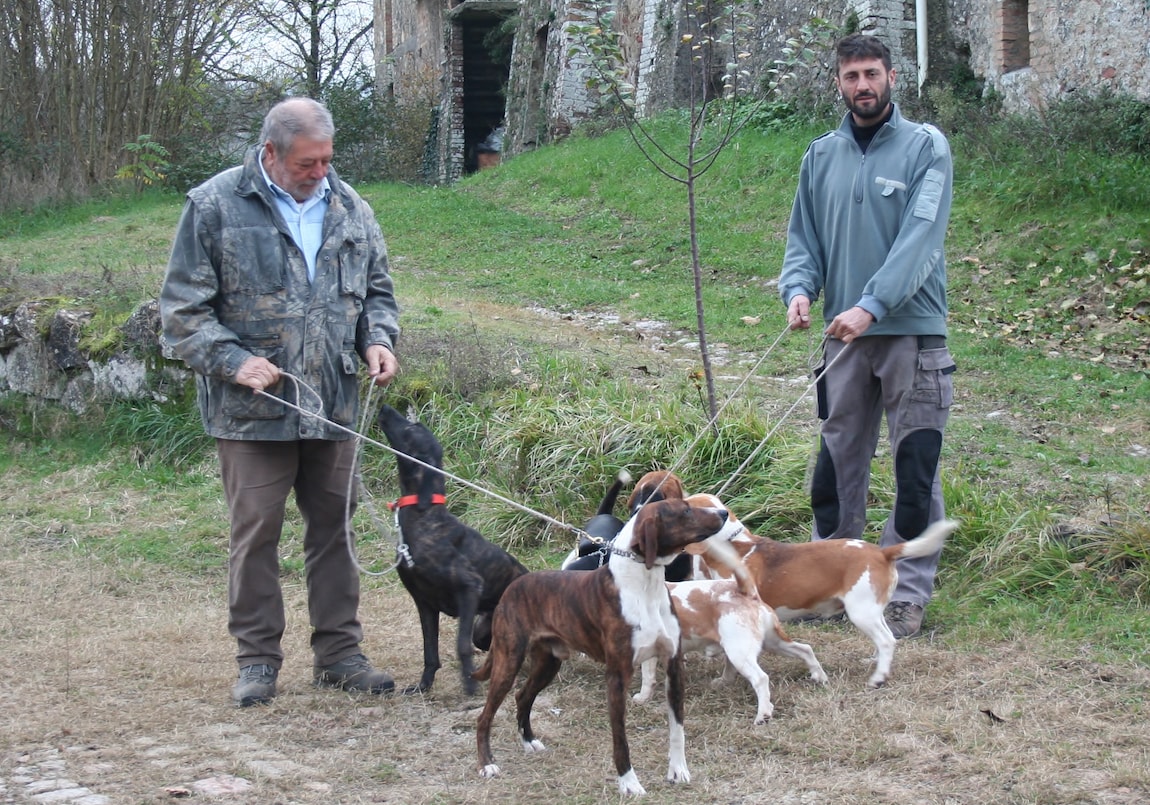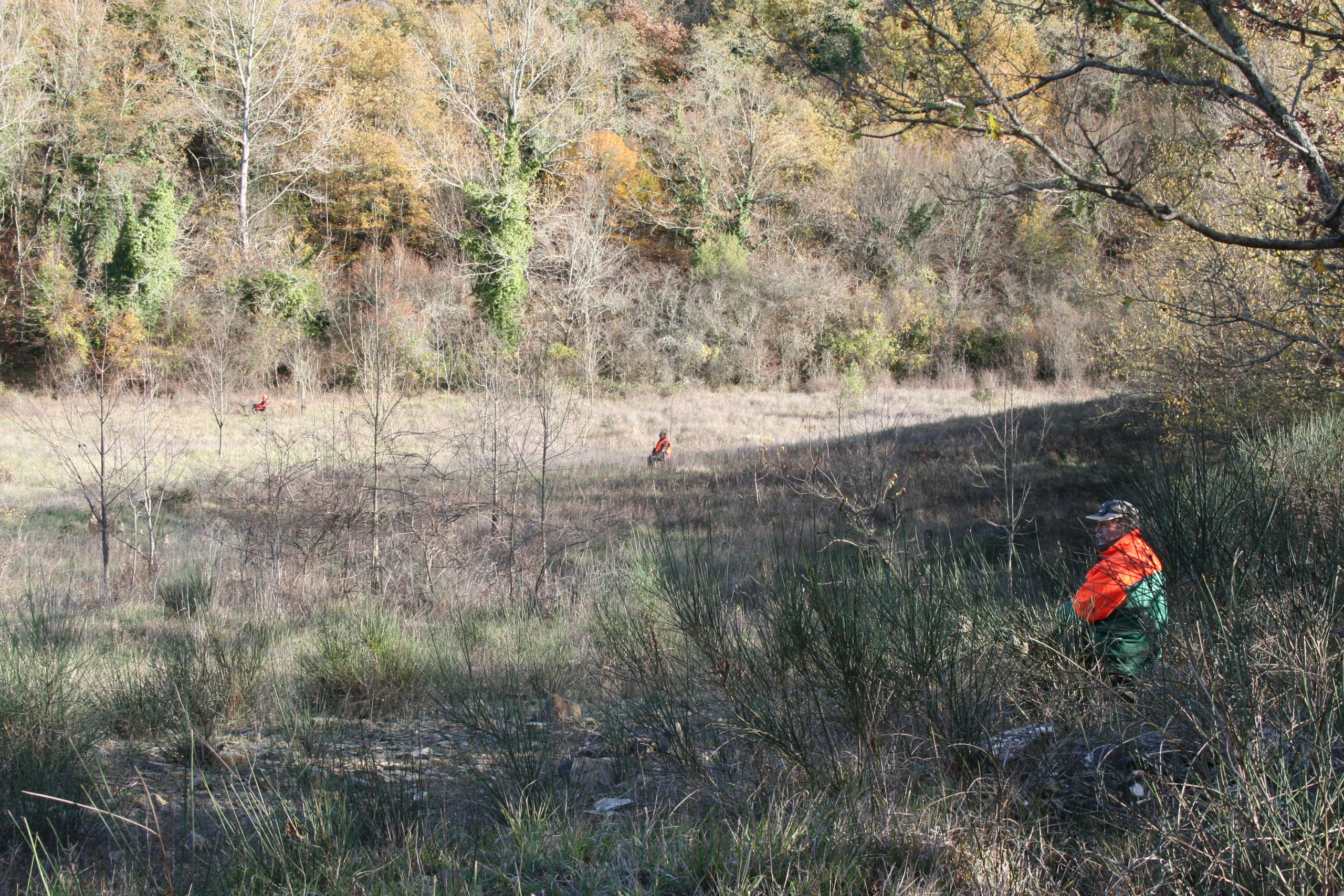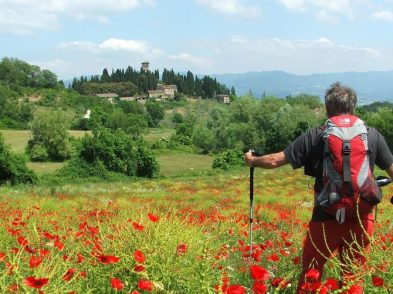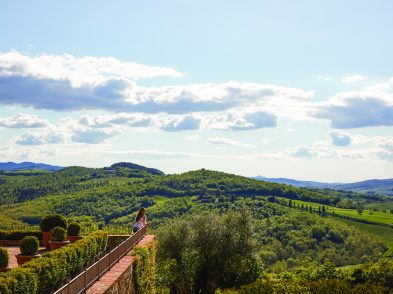“Thank God” is what Fiorenzo Vanni, a seasoned Sienese hunter, thinks when he gets a kill shot on a wild boar. These animals are impetuous beasts, enormous, yet fast and agile, especially when being chased. “My heart pounds when I hear a 100 kilo boar rumbling towards me. Can you imagine the noise?” he asks. After the shot, besides relief, he feels intense joy and satisfaction, because “if I miss, the whole day has been a waste for everyone.”
Fiorenzo, born and raised in Siena, went on his first hunt at the age of ten accompanied by his uncle in the 1950s, when one hunted out of necessity. “It wasn’t a sport then. We hunted to bring food home to our family. It gave us pleasure to bring meat back to feed everyone. It was an honor to be a hunter.” He speaks eloquently, his voice evoking nostalgia at the memories of his hunting past.
Today, hunting in Siena has changed. Back then game consisted mainly of hare, pheasant and migratory birds. Larger game was introduced into the area in the ‘70s to include wild boar and deer. The open season for wild boar lasts from November 1until January 31, and teams can hunt a maximum of three days per week. Licensing has also been restricted. “Back then anyone who didn’t have a criminal record could get a rifle. Hunting was open all year round and all day long,” explains Fiorenzo.
Having grown up in New York City, and not knowing a thing about hunting, I ask Fiorenzo to tell me about a typical boar hunt. The first thing he mentions is the squadra or team—an official group of approximately 100 hunters plus 30 to 40 hunting dogs. In fact, the traditional boar hunt is always in battuta, which means it features multiple participants or hunters. Each team is assigned a wooded area of approximately 300 to 400 hectares and cannot hunt in another team’s zone. Despite the large number, Fiorenzo stresses the unity and solidarity within the group: “We never speak about politics, only hunting. It’s an unwritten rule.”
At dawn, a few team members analyze the animal tracks to judge the animal’s location. In the meantime, the rest of the team arrives at the hunting lodge and awaits the head hunter’s orders. Discipline and following orders is of utmost importance, Fiorenzo stresses, considering the danger involved. Each hunter is then assigned a post, where he or she spends most of the day alone. The hunters at their posts form a semi-circle type barrier, while the dogs wait to be released on the opposite side of the barrier. Once the dogs are released, they track down the boar barking and chasing the animals towards the hunters, who stand ready to shoot.
“How do you feel when you miss a shot?” I ask. “I am mortified. And I won’t hear the end of it as my teammates will surely tease me about it,” he laughs.
At the end of the day the hunters round up at the lodge to clean and divide up the boar into equal parts for everyone. They sit in front of the fire talking about the day’s results over dinner and wine, retelling stories from past hunts. A welcome repose and end to a long day spent alone, often weathering difficult winter conditions, from heavy rain and winds to snow.
Since hunting has traditionally been a family affair, I ask Fiorenzo if he’d ever brought his sons hunting. His answer is a stern no.
“No. Hunting will eventually die out, especially if it continues to become more restrictive. Before hunters were respected and revered, now they are shunned. Very few young people hunt now. My generation still hunts because it’s something we’ve always done. It is tradition.”
Valeria, Fiorenzo’s wife of forty five years, was kind enough to share her wild boar stew recipe that she makes around the holidays.
METHOD
The night before you plan to cook the boar, put the meat in a bowl and cover it entirely with salt. The best parts to use are the sirloin, tenderloin and thigh. Leave it in the refrigerator overnight for at least twelve hours. The morning after, wash off all the salt and cut the meat into small cubes, approximately 4 to 5 centimeters. Put all the pieces in a large pan and cook the meat long enough to get rid of all the excess water.
Remove the meat from the pan and discard the water. Place the boar pieces back in the pan. Chop 1 onion, 1-2 garlic cloves, 1 celery stalk, 1 carrot, 1 twig rosemary and 1 small bunch parsley and mix together with salt, black pepper and hot pepper flakes. Cover the meat with the chopped vegetable mix and add about ½ cup extra virgin olive oil. Brown all sides on medium heat. Add 1 cup of good red wine. After the wine is reduced, add 500 grams of chopped peeled tomatoes. Add enough meat broth to cover the pieces. Simmer, covered over low heat, until all the ingredients reduce to a dense sauce and the meat is cooked through and tender, approximately 1.5-2 hours.






